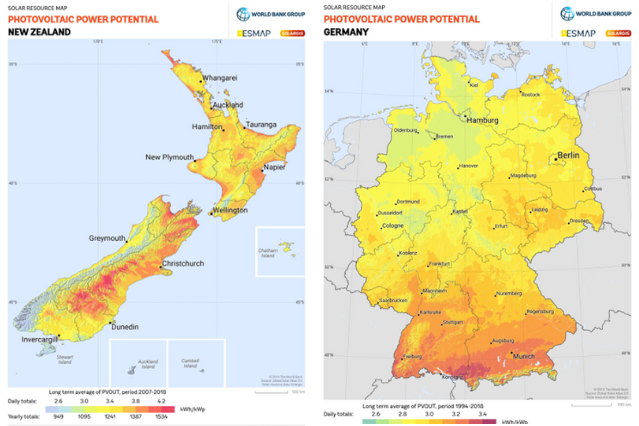Eye on electricity
Let the sun shine!
- Generation
- Low emissions
New Zealand’s first megawatts (MW) of solar power were generated and sold on the wholesale market last week. Kaitaia solar farm, in the far north of the North Island, is the first of a number of solar farms that will change electricity generation in New Zealand.
Starting from small beginnings
While New Zealand has over 300MW of solar power connected to the grid, it’s mostly been small scale until now. The first ‘large scale’ solar farm in New Zealand was the 1MW Rosedale floating solar farm – a creative solution to work around land constraints that was completed in 2020. For two years, the crown of ‘largest solar farm in NZ’ was held by the 2.1MW Kapuni solar farm, which was passed by the 5.2MW Gisborne solar farm and now Kaitaia at 32MW.
Kaitaia is the first large scale solar farm to generate enough electricity to be connected to the transmission system and wholesale electricity market.
More large scale solar to come
At the time of writing, there are at least five solar farms being built on the North Island, totalling over 200MW of new generation capacity, with more farms scheduled to start construction in 2024. This includes farms in Edgecumbe, Waiotahe and Foxton, among others. There are also solar farms planned for the South Island, near Lauriston and Christchurch which are likely to start construction next year.
Transpower has received connection enquiries for more than 8,000MW in solar projects. 3,000MW of those solar projects include battery storage.
Can solar work well in New Zealand?
Aotearoa may be the land of the long white cloud, but there’s more sunshine here than you might think! Most areas of New Zealand get more sunshine energy per year than Germany does, and Germany has one of the highest amounts of solar per capita in the world. It might not be where you expect, either. The high plains in South Canterbury get almost as much sunshine energy as the sunny parts of the North Island.

Solar also brings a useful benefit to New Zealand: when the rain doesn’t fall and the wind doesn’t blow… it’s usually sunny! When it’s a dry year in New Zealand, solar can provide another supply source for the megawatt-hours needed to keep the power on. Solar is also easy to install and cheap to run. However, intermittent renewable generation (ie, generators where the output cannot be guaranteed, such as solar and wind which rely on the weather) comes with challenges for the electricity system.
What happens when the sun doesn’t shine?
The Electricity Authority’s recent paper on New Zealand Wind and Solar Generation Scenarios showed that New Zealand will still need other generation technologies to run when it’s a calm day and the sun isn’t shining. Solar also isn’t available on cold winter nights when demand is high. Wind, hydro, batteries and thermal generation may be needed to balance the system at these times. Demand flexibility will also be important. We’re working to increase coordination and information sharing to allow participants to react faster to variations in intermittent generation.
Related News
Centralised wind and solar forecaster contract awarded
The Electricity Authority has awarded a contract to provide centralised wind and solar forecasting services to DNV Services.
Battery energy storage systems roadmap released
We have published a draft two-year roadmap that sets out our work to support investment in battery energy storage systems (BESS). BESS will become increasingly…
Submissions published on frequency-related Code amendment proposals
We have published submissions on our proposal to amend Part 8 of the Code to address increased frequency variability in New Zealand’s power system.